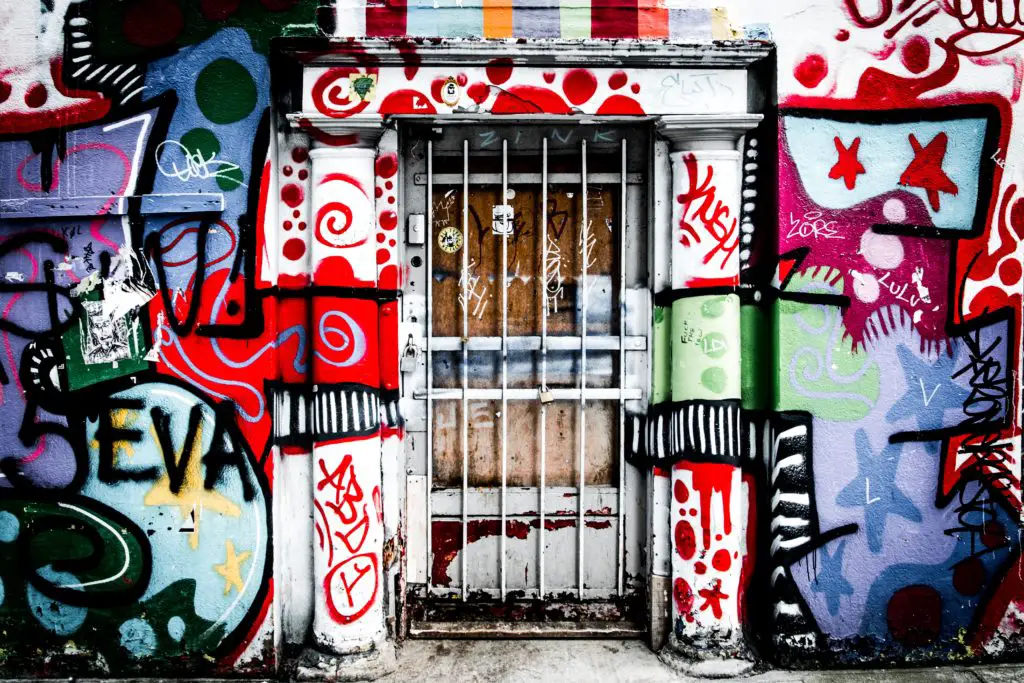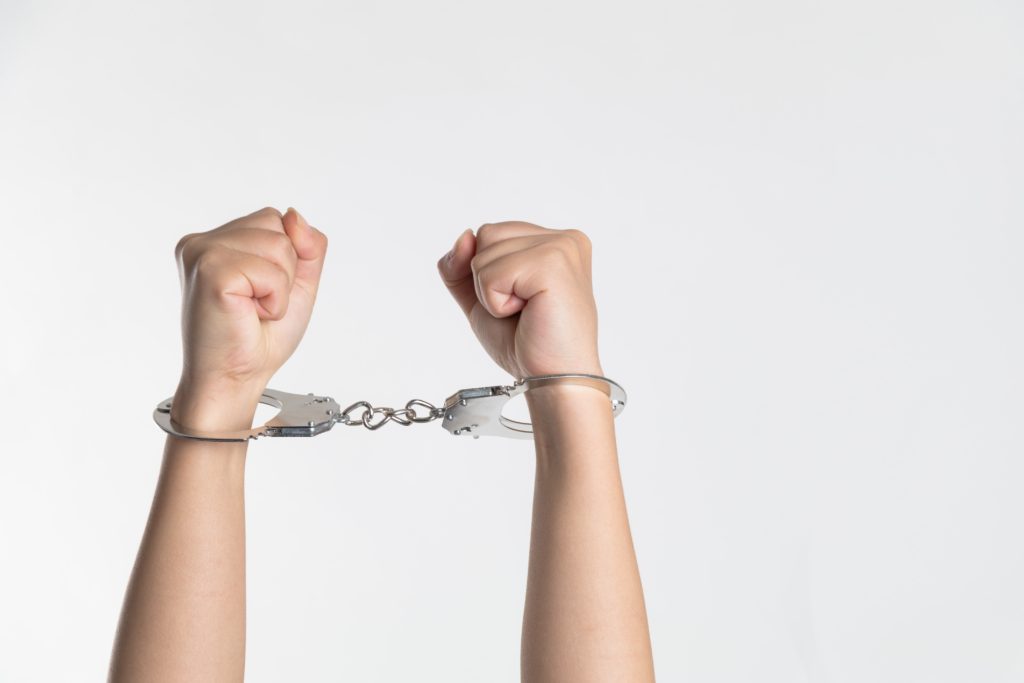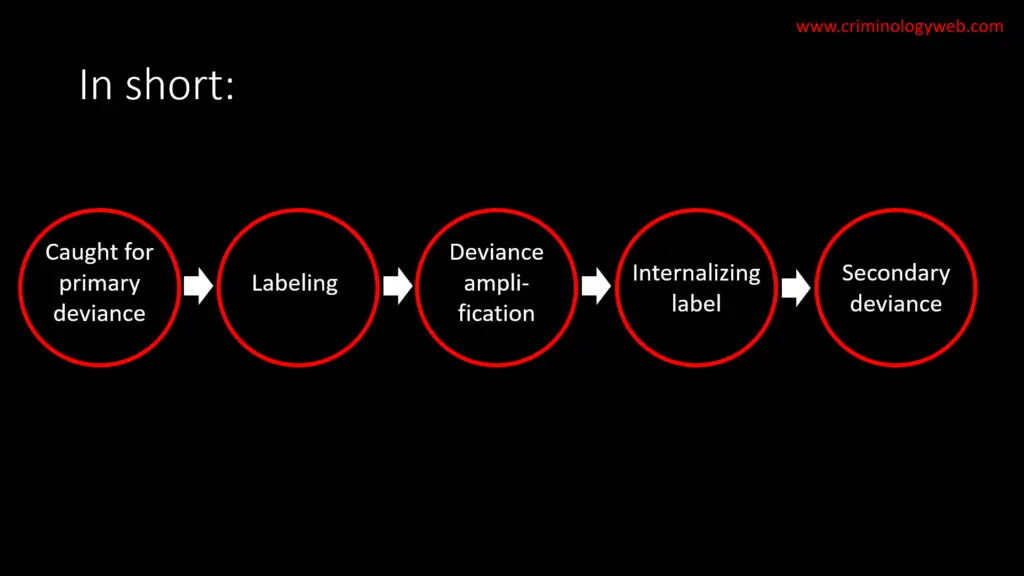Labeling theory focuses on how other people’s opinions can influence the way we think about ourselves. More specifically, labeling theory says that when other people see and define us as criminal, that’s exactly what we become. We change our self-concept to fit what other people think of us, and if they give us the label of a criminal, we will ultimately behave according to that label. In other words, we will become offenders because other people say that we are offenders.
Labeling theory has a rich tradition in criminology and several criminologists have contributed to it. That means that the theory, or the perspective as some call it, can be a little complicated. So we’ll first break it down into several building blocks. And after that, I’ll sum up the labeling process in a graph.

Table of Contents
Deviance as a Label: Moral Entrepreneurs According to Howard Becker
First, one of the basic ideas behind labeling theory is that no act or behavior in itself is criminal; it’s the societal reaction to a behavior and the law that make that behavior criminal. In other words, it’s the way in which society classifies a certain behavior that determines if it’s a crime. So if society says that a certain behavior is a crime, then it becomes a crime.
So how does this work? Labeling theorists argue that it is the powerful parties in society, particularly the upper and middle class, that determine what crime and deviance is. They are the ones who create the rules. The upper and middle class want to benefit from the law and they use the criminal justice system (so the police, courts, corrections etc.) to enforce the rules by punishing the people who are not powerful. Howard Becker, an important labeling theorist, called these people, so the ones who create the rules and the ones who enforce the rules “moral entrepreneurs”.
By setting the rules for what people are allowed and not allowed to do, so setting the rules for what is a crime and what is not a crime, the powerful people in society determine what deviance is. So an act or behavior in itself is not deviant. It’s breaking the rules of the powerful that is deviance, and this is an important building block in labeling theory.

The Labeling Process as Defined by Edwin Lemert: Primary Deviance
A second important building block in labeling theory is the actual labeling process, so the process by which a person gets the label of a criminal and subsequently starts acting as one. The labeling process includes different stages, as defined by Edwin Lemert, one of the early labeling theorists. The first stage is called primary deviance. According to labeling theory, primary deviance is something that many of us have engaged in. Many people, especially when they were younger, have at some point done something that is deviant, like perhaps stealing or destroying something. Often, these acts are not noticed by others and no harm comes from them, or at least, that how labeling theorists portray them. Labeling theorists are not really interested in these acts and why people engage in them.
What they’re interested in is what happens when people are caught doing something that’s against the law. Most people are not caught when they’re violating the law in this way but some are. And when they’re caught, like being arrested by the police, the process of labeling, namely of defining a person as criminal, begins. Frank Tannenbaum, another important labeling theorist, has called this process the “dramatization of evil.” A person is tagged as delinquent or bad. So at this stage, it’s not just the act that is labeled criminal, it’s the person him- or herself who is labeled. People start to behave differently towards him or her; he or she is singled out, given a label, and rejected by society.
An important note to make here is that according to labeling theorists, it is usually the lower-class people, like those who are unemployed and poorly educated, who are caught. They are the ones who are being charged and prosecuted, not so much because of what they did, because many people are committing crimes, but because of who they are. So these people are being labeled, which in turn of course reinforces the low status in society that they already had. So this is how primary deviance is seen in labeling theory.

Secondary Deviance: Stigma, Self Fulfilling Prophecy, and Deviance Amplification
The labeling process then leads to a second step, namely secondary deviance. What happens in this step is that the people who have been labeled delinquent start to self-identify with that label. In other words, they start to see themselves as delinquent and start to act accordingly by committing more crime. In this way, the initial label works as a self fulfilling prophecy. So a formal sanction like being arrested by the police can actually stigmatize people, and people then try to live up to that label. In other words, one of the basic tenets of labeling theory is that that if the government intervenes in the lives of offenders, for example by arresting them, they will only make things worse.
This process of stigmatization can have lasting effects on people’s self-identity, and a sort of chain reaction starts happening. The people who have been labelled and stigmatized start hanging out more with other delinquents, who approve of each other’s behavior. This is the final stage in the criminal career: they become outsiders, isolated from society, and hostile towards law-abiding citizens, which in turn leads to what is called “deviance amplification”, meaning more deviance.

Labeling Theory Summary
So let’s sum up the labeling process in a quick graph. In short, when someone is caught committing a primary act of deviance, this triggers a sequence of events, namely being labeled negatively by society, which can then lead to more deviance (“deviance amplification”). If this continues, the offender may internalize the label and conform to it, which then leads to secondary deviance.
Caught for primary deviance (formal intervention) -> labeling -> deviance amplification -> internalizing label -> secondary deviance

History and Popularity of Labeling Theory
Labeling theory was popular in the 1960s, especially in the US, which may not be a surprise because in that period, there were many people who believed that government intervention in general was negative. They felt that the government could not be trusted, for example regarding the war in Vietnam and civil rights. During the past couple of decades, labeling theory has not received as much attention. One of the reasons for that is that research has not always been supportive of it. For example, research has not found that everyone who is labeled criminal also starts to see themselves as such. Labeling theory has also received criticism because it doesn’t explain why people start committing crime because it doesn’t explain why primary deviance happens. Instead, it explains why people continue to commit crime, so secondary deviance. Nevertheless, labeling theory has received a lot of attention and is quite different from other criminological theories. Whereas other theories are mainly concerned with why people start committing crime in the first place, labeling theorists were not interested in that. Instead, they were interested in what happens when the justice system intervenes in the life of offenders and how this can lead to more offending.
Further reading
A recent overview of labeling theory can be found here:
Bernburg, J. G. (2019). Labeling theory. In Handbook on crime and deviance (pp. 179-196). Springer, Cham.
